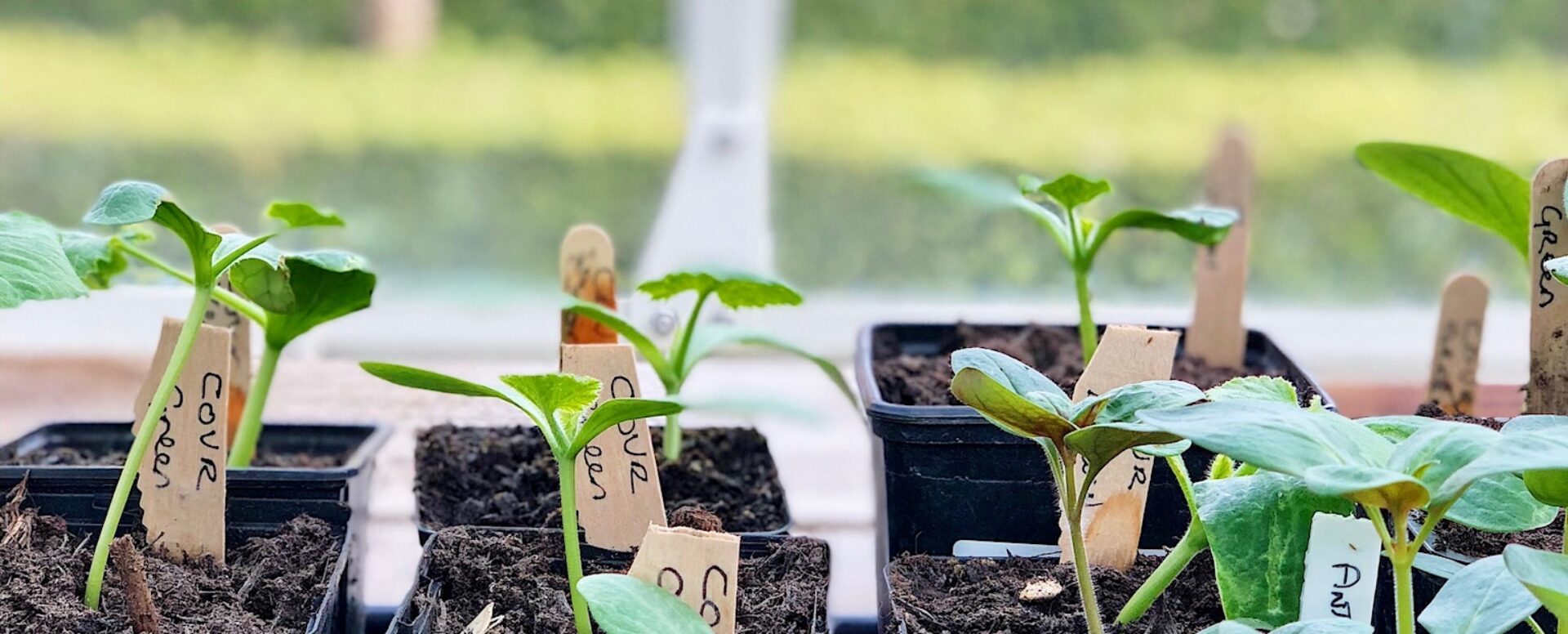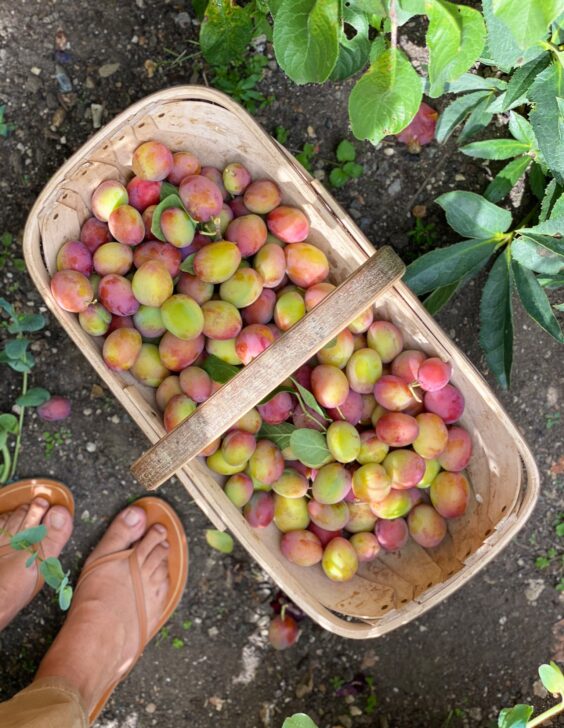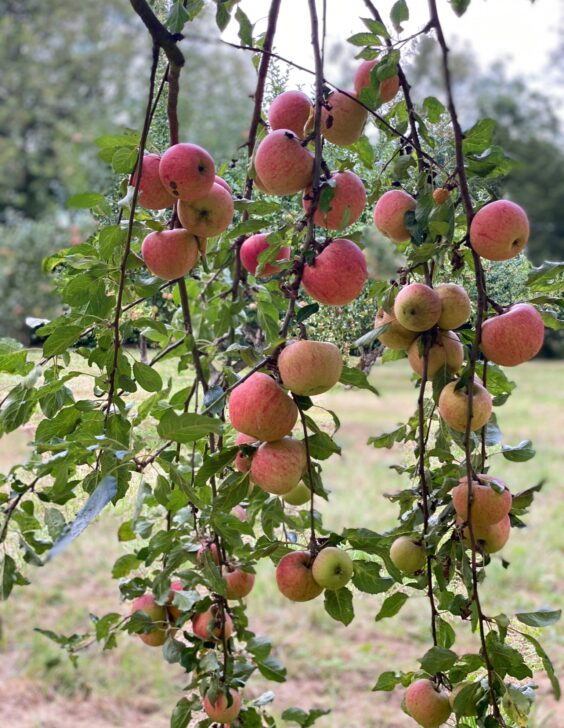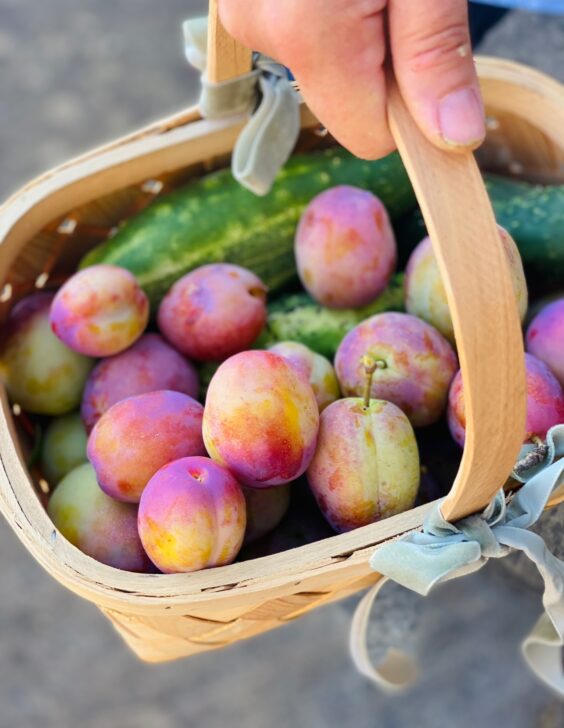How to Sow Seeds
Nov 2022

I am definitely not an expert when it comes to gardening, but I find following the methods below increases my germination success rate when it comes to sowing annual seeds (either flowers or vegetables). Do always read your seed packets for information on how and when to plant your seeds though, as timings may vary considerably, and if I’ve learned one thing the hard way, it’s that seeds really like to be sown at the right time. It is important to not sow too early otherwise you could end up with overgrown seedlings that need to be planted out, but the soil won’t be ready or they’ll be nipped off by frost. So remember – timing is key.
But with that in mind, here are the two main methods I use, plus a list of some of my favourite seeds to grow.
Sowing into modules or seed trays
This is how I start off almost all of my seeds, especially in spring. I fill up big module trays with a good quality, peat-free compost (that is specifically for seeds), and gently pat it down. You don’t want to really compress it – the little seed roots need to be able to easily find their way through the air pockets of the compost.
I then make a little indent in the top of the compost in each module, and drop a few (roughly 3-5) seeds into it. I’ll sprinkle over a little more compost to cover them, then place the whole module tray into a container of water to get thoroughly wet from the bottom up. This works better than watering from the top, as that can dislodge the seeds.
The trays are then labeled, and left either in the greenhouse, or in a propagator (basically an electric blanket and roof for plants). Remember, most seeds don’t need light until they have sprouted (do check the back of each seed packet), but they do often need consistent warmth. So even a warm airing cupboard can work well. Just make sure they move somewhere sunny the moment you start to see shoots appearing, or you’ll end up with long leggy baby plants that never quite seem to recover. So do check on them daily.
Direct sowing
This works well for some plants, and is less work than sowing into modules or trays. However, you do need to have really good quality soil, minimal weeds and be a bit more proactive when it comes to pest control, as very tiny baby plants are more susceptible to attack than older ones.
You make a little trench, just an inch or so deep, along the line that you want to sow your seeds into. Water that trench with a hosepipe or watering can so the soil is damp, then, very sparingly, sprinkle seeds all the way along the trench. My trick is then to back-fill the trench over with compost (rather than soil). This reduces the risk that there will be stones or large pieces of mud that will sit on top and squish the tiny emerging plants, and also happens to make a very useful marker of the line you’ve sowed. Don’t forget to label what you’ve planted (a great tip I learned is to write all of your labels before you start to sow your seeds). However much you promise yourself that you’ll remember what you put where, I speak from experience that you will be standing scratching your head and wondering what on earth is poking through the soil in a few weeks time if you don’t.
Seed suppliers & keeping notes
I mostly order from Sarah Raven, Vital Seeds, Franchi seeds of Italy or Chiltern seeds. It’s a bit of Christmas holiday ritual for me. I’ll find a quiet evening in front of the fire, and make a plan of what needs sowing and when and put it into a huge spreadsheet. Then I’ll put in my order in the hushed week between Christmas and New Year. Don’t wait too late to do this as some of the best varieties do sell out. Then, as I go through the growing year, I’ll add little notes about when I did actually sow it (or plant it out), how much we grew, how much we would have liked to have grown, and how it did / tasted / looked later in the year.
If you’re not so keen on a spreadsheet (and I totally understand that), try using a big plain notebook or a garden planner. Everyone works in different ways but having a plan and a timetable is essential, and I’ve found keeping notes from one year to the next utterly invaluable.
MORE TO EXPLORE
Please note that the information on this website is provided for general information only, it should not be treated as a substitute for the medical advice of your own doctor or any other health care professional providing personalised nutrition or lifestyle advice. If you have any concerns about your general health, you should contact your local health care provider.
This website uses some carefully selected affiliate links. If you buy through these links, we may earn an affiliate commission, at no additional cost to you. This helps to keep all of our online content free for everyone to access. Thank you.







